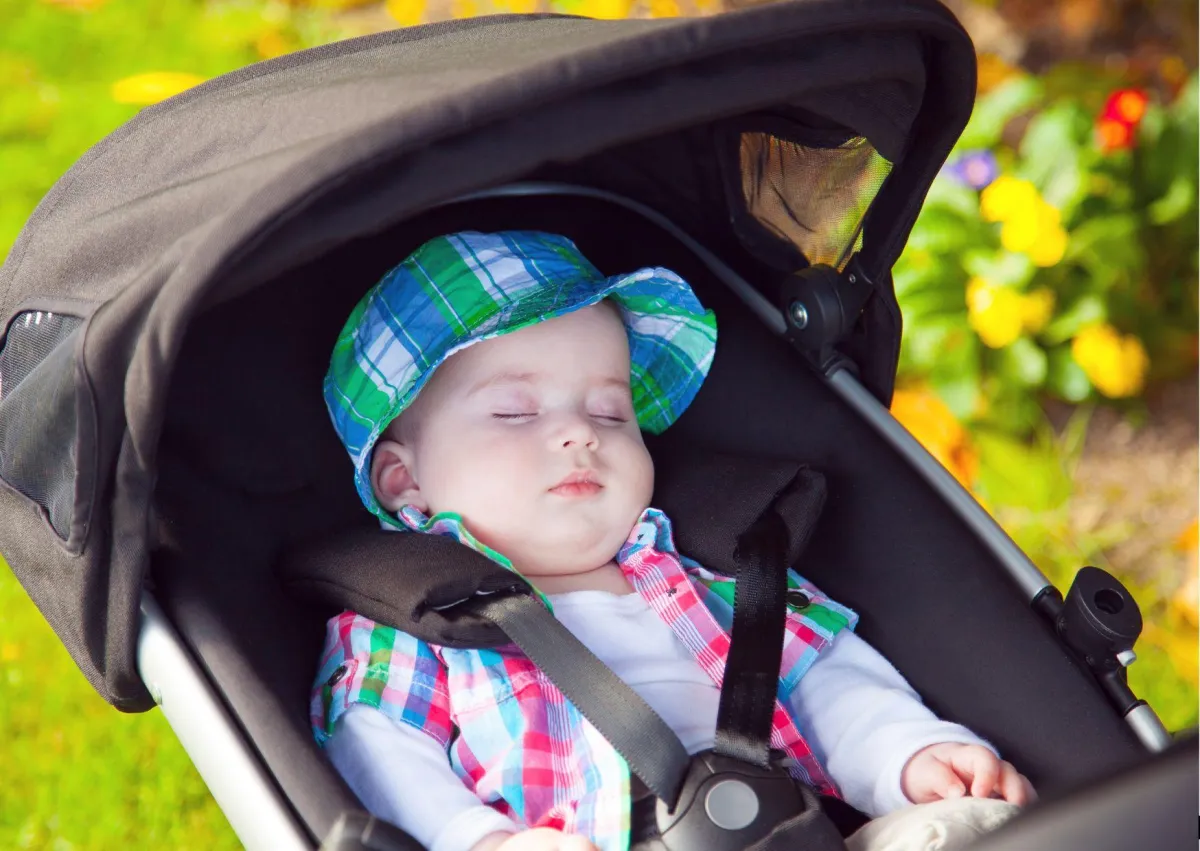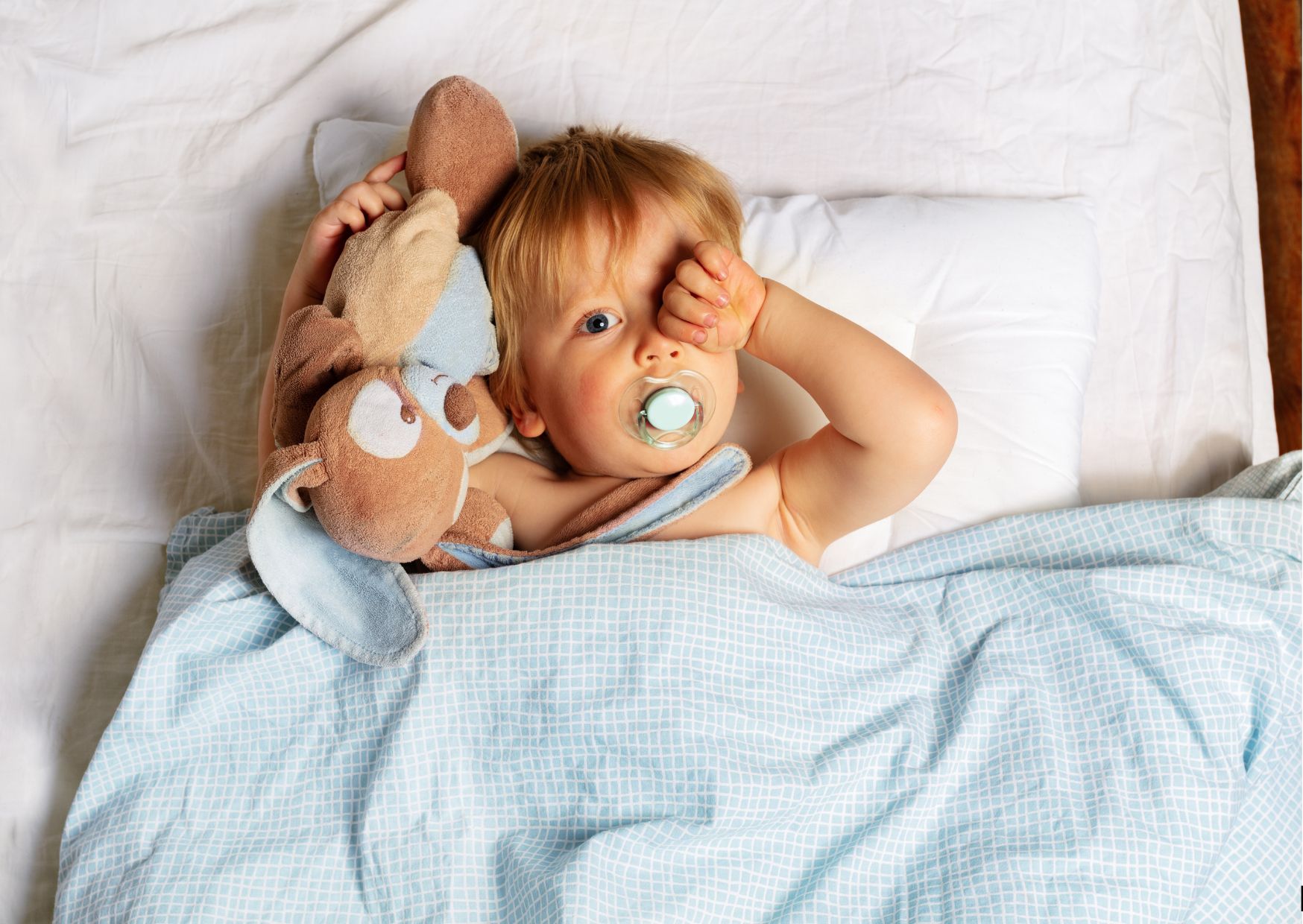
Holiday Disruptions? How to Keep Baby’s Sleep Consistent

Holidays bring joy, family gatherings, and often—major changes in a baby’s routine. From missed naps to unfamiliar sleeping arrangements, the season can easily throw off even the most predictable sleep patterns. But understanding how holiday disruptions affect sleep and knowing how to support consistency can make all the difference.
How Holidays Disrupt Baby Sleep
Travel, new time zones, and extended family schedules all challenge sleep. Research shows that during school holidays, children’s bedtimes shift by an average of 30–60 minutes, and sleep duration increases slightly—but sleep quality tends to decrease due to later nights and irregular routines¹. Though infants aren’t in school, similar disruptions apply when routines are inconsistent.
Additionally, studies of infant sleep patterns show that even small changes in environment—like visiting family or changing cribs—can reduce sleep duration and increase night wakings². Babies thrive on consistency, and deviation from expected routines can throw off their circadian rhythm and lead to overtiredness.
Why Consistency Matters
Sleep in infancy is foundational for brain development, behavior regulation, and emotional processing. Even short-term disruptions can have measurable impacts:
Cognitive and emotional outcomes: Inconsistent sleep has been linked to lower executive function and attention scores in toddlers³.
Behavioral issues: Irregular sleep routines predict more behavioral difficulties in children under 3⁴.
Health risks: In older children, irregular bedtimes and insufficient sleep are linked to higher BMI and metabolic risk factors⁵.

Tips for Keeping Sleep on Track
Anchor to Bedtime and Naps
Aim to keep bedtime and nap times within 30–60 minutes of normal, even during travel or festivities. This reduces overtiredness and helps preserve circadian rhythm⁶.Stick to the Routine
Maintain a consistent bedtime routine: bath, book, feeding, lullaby. Predictable steps cue the brain for sleep—even in a new environment⁷.Use Familiar Sleep Aids
Bring your baby’s sleep sack, white noise machine, or crib sheet. Familiar smells and sounds ease the transition².Plan Travel Strategically
If possible, travel during a scheduled nap or bedtime. Offer opportunities for quiet time and rest in transit or after arrival⁴.Create a Safe, Sleep-Friendly Space
Use blackout curtains, a firm sleep surface, and keep the room cool and quiet. Follow AAP safe sleep guidelines wherever you are⁸.
After the Holiday: Reset and Restore
Once festivities end, return to your regular schedule quickly. It may take a day or two, but reestablishing consistency with bedtime routines and wake windows will help recalibrate your baby’s internal clock.
If your baby seems to be experiencing a sleep regression and you are not sure how to get your baby sleeping consistently again, consult a pediatric sleep specialist.
References
Weathington, B. L., Earnhardt, M. P., & Drexler, J. A. (2017). Sleep pattern changes in children during holidays. Sleep, 40(suppl_1), A64–A65.
Sadeh, A., et al. (2000). Sleep and temperament: New research on the early development of self-regulation. Developmental Psychobiology, 36(3), 191–201.
Bernier, A., et al. (2013). Sleep and cognitive development in early childhood. Child Development, 84(5), 1542–1553.
Mindell, J. A., & Williamson, A. A. (2018). Benefits of bedtime routines for children: A literature review of recent research. Journal of Pediatrics, 203, 293–299.
Anderson, S. E., et al. (2016). Bedtime routines, sleep duration, and weight status in preschool-aged children. Sleep Health, 2(3), 173–179.
Mindell, J. A., & Owens, J. A. (2015). A Clinical Guide to Pediatric Sleep: Diagnosis and Management of Sleep Problems (2nd ed.). Springer Publishing.
Staples, A. D., Bates, J. E., & Petersen, I. T. (2015). Bedtime routines in early childhood: Prevalence, consistency, and associations with nighttime sleep. Sleep Health, 1(2), 88–92.
American Academy of Pediatrics. (2022). Updated 2022 Recommendations for Infant Sleep Safety. Pediatrics, 150(1), e2022057990.
